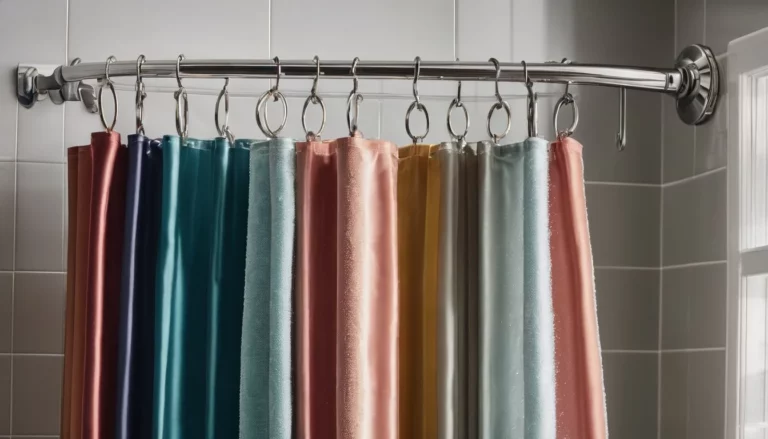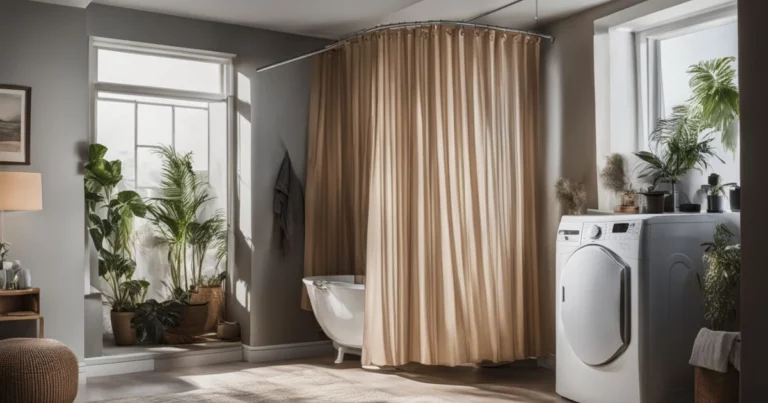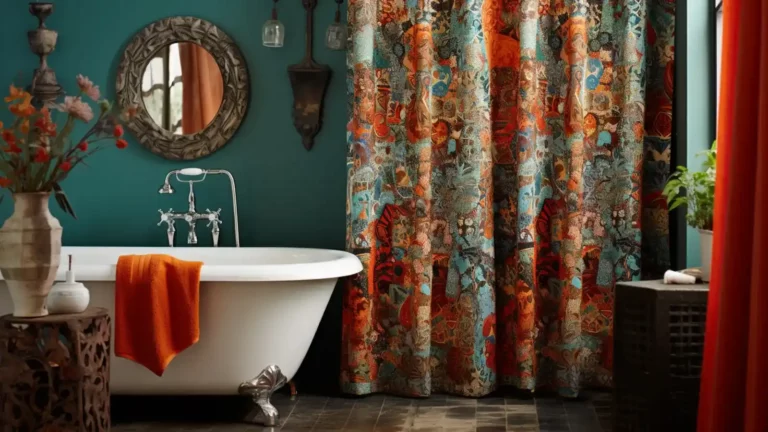What Are Shower Curtain Liners? Choose the Best Shower Curtain Liner
Ever wonder how to keep water neatly tucked away in the shower, avoiding puddles and splashes on your bathroom floor? The answer often lies in a quality shower curtain liner.
So, what are shower curtain liners? A shower curtain liner works diligently behind the scenes to safeguard your space. It is much more than a mere bathroom accessory. It’s a fundamental part of your bathroom’s design and functionality.
Your shower curtain liner not only protects your curtain from moisture but also prolongs its life. A good shower curtain liner can protect your fabric shower curtain from mold and mildew and keep it looking great for longer.
Table of Contents
Key Takeaways for Selecting a Shower Curtain Liner
- Invest in a shower curtain liner with maximum water repellency to protect bathroom floors and prevent accidents.
- Choose materials wisely. Consider both water resistance and the protective qualities offered by your shower curtain.
- Take into account the liner’s function to not only shield against water but also to resist the growth of mold and mildew.
- Opt for a shower liner that balances durability with easy maintenance for long-lasting performance.
- Pay attention to the liner’s size and fit to ensure the best protection and compatibility with your existing setup.
What Are Shower Curtain Liners? Understanding the Importance of Liners
When outfitting your bathroom, you cannot overstate the significance of a shower curtain liner. It not only preserves the look and longevity of your fabric shower curtain but also ensures the bathroom floor remains dry and safe.
Protect Decorative Shower Curtains
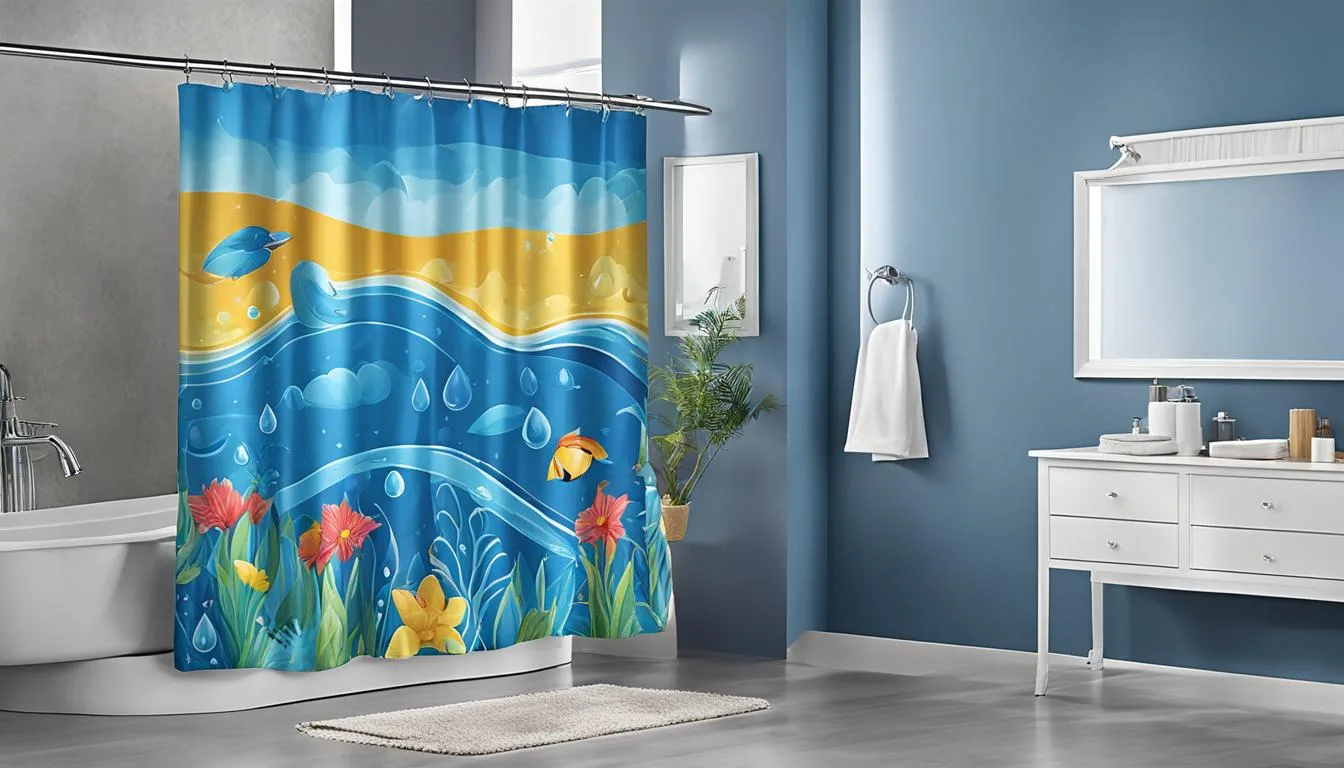
Your choice of linen or other fabric-themed shower curtain reflects your personal style and adds a touch of elegance. But, without a liner, these materials become susceptible to moisture. This can lead to mold growth or fabric damage. The liner acts as a trusty shield. It repels water and keeps your decorative piece pristine.
Prevent Water Leaks and Splashes
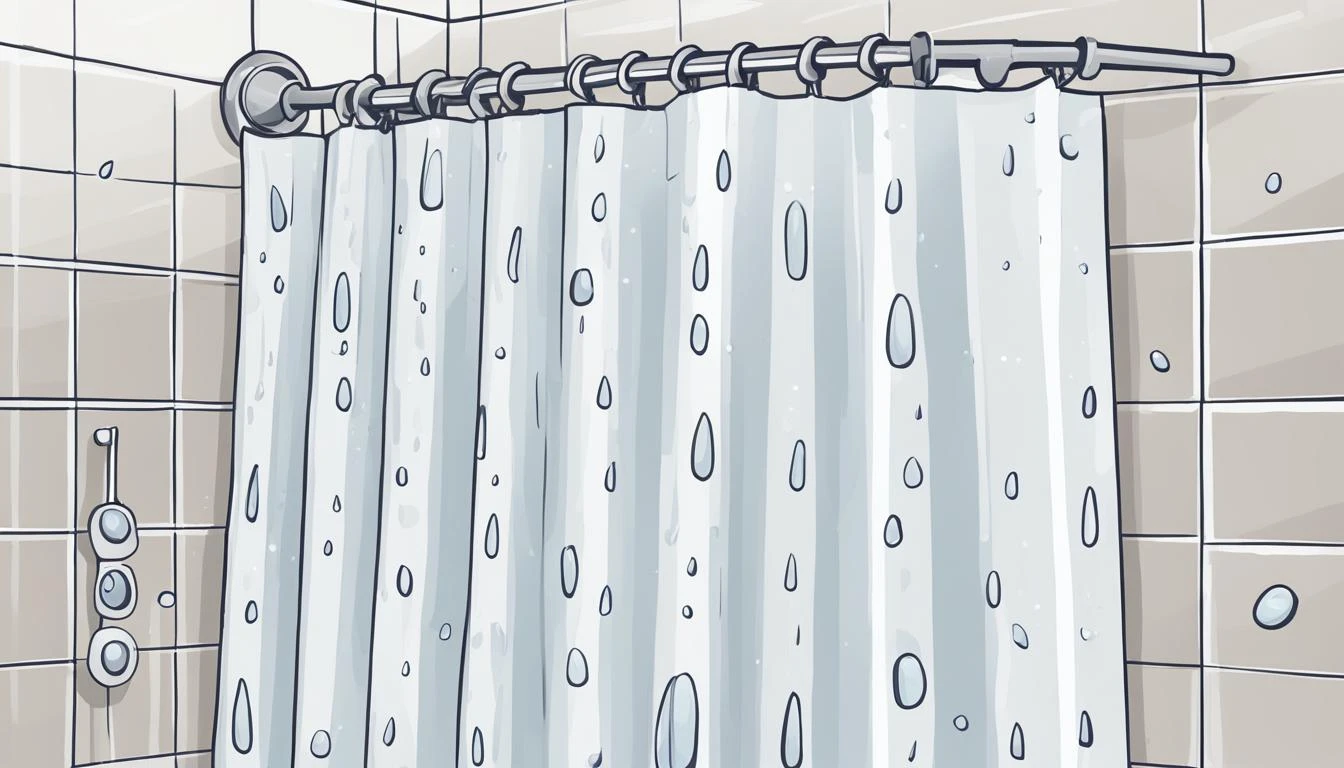
Every time you shower, water pressure and movement can cause unplanned splattering and leaking. This is where a proper liner comes into play. Whether it’s a vinyl shower liner or another type, it’s a critical barrier. It meticulously works with the shower rod and curtain rings to seal off your shower area. The result? A spotless, slip-free bathroom floor is safeguarded against the hazards of constant moisture.
Exploring Different Types of Shower Curtain Liners
When choosing a shower curtain liner, understanding the advantages and drawbacks associated with each type can help you make an informed decision. Let’s dive into the distinctive features of vinyl or PVC liners, PEVA and EVA liners, and fabric shower curtain liners. So you can select the one that best meets your needs.
Vinyl / PVC Shower Liners

Value Vinyl shower curtains and PVC liners for their water-repellent properties and cost-effectiveness. Many homeowners prefer this type because it keeps water inside the shower. But beware of the volatile organic compounds released by plastic liners. They will pose environmental and health concerns.
PEVA & EVA Shower Liners

For a more environmentally conscious option, turn to PEVA shower curtains and EVA alternatives. These liners are crafted from chlorine-free materials, reducing your exposure to harmful chemicals. Moreover, their antibacterial qualities contribute to a cleaner and more wholesome bathroom environment.
Fabric Shower Liners
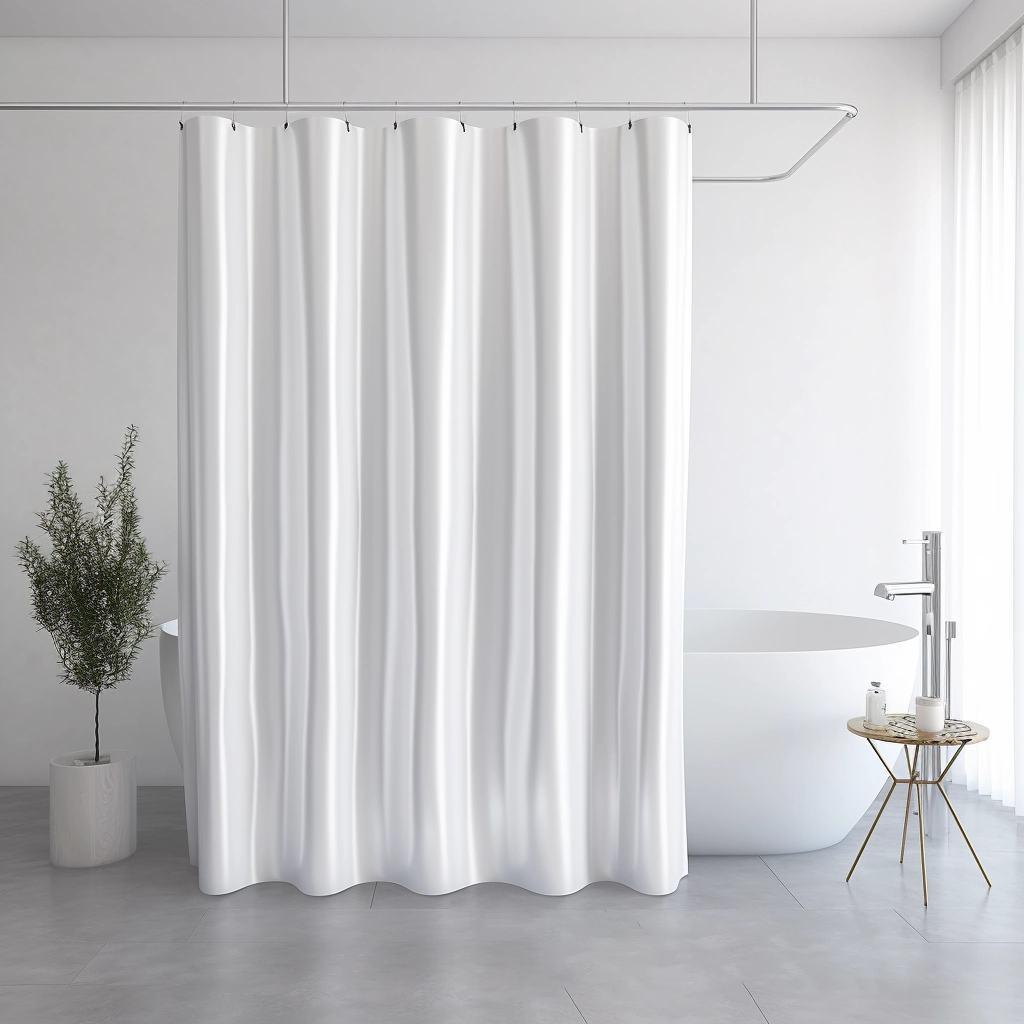
Fabric shower curtain liners present an upscale look with materials such as polyester or lush cotton. They’re a fantastic way to add a touch of elegance to your bathroom decor while also serving their practical purpose. Remember, upkeep is crucial with fabric liners. They need regular cleaning to stave off unwanted mildew.
| Type of Liner | Material | Water Repellent | Eco-Friendly | Maintenance |
|---|---|---|---|---|
| Vinyl or PVC | Plastic | Yes | No | Low |
| PEVA or EVA | Polyethylene vinyl acetate, Ethylene vinyl acetate | Yes | Yes | Low to Moderate |
| Fabric | Polyester, Nylon, Cotton | Usually | Varies | High |
Eco-friendly Options

Opting for an eco-friendly shower curtain liner is an excellent way to make your bathroom greener. The best fabric for an eco-friendly approach is the PEVA liner. It has fewer toxic features compared to traditional materials. These liners have minimal emissions of volatile organic compounds. They’re a safer choice for your home and the planet.
PEVA liners are not only less toxic, but they also boast an ability to efficiently repel water. They help keep your bathroom cleaner. Furthermore, they are easy to clean and often compatible with a quick cycle in your washing machine, saving both water and time.
Recycling and Disposal of Old Liners
When it’s time to retire your old shower curtain liner, consider the environmental ramifications of disposal. The best practice entails recycling or properly discarding them to reduce environmental harm. Not all materials can be recycled, but PEVA and EVA can be responsibly disposed of, reducing landfill waste.
Review the table below to understand the eco-friendliness of different liner materials, along with their maintenance and disposal guidelines:
| Material | Eco-Friendliness | Machine Washable | Disposal Method |
|---|---|---|---|
| PEVA/EVA | High | Yes | Recyclable |
| Fabric | Varies | Usually | Recyclable or Donate |
| PVC | Low | No | Landfill |
All liners serve the same fundamental purpose of keeping your bathroom dry and tidy. But your choice may vary depending on your environmental concerns, health awareness, aesthetic preferences, and willingness to maintain the liner. Consider these factors as you navigate the sea of options to find the perfect fit for your sanctuary.
Choosing the Right Shower Curtain Liner for Your Bathroom
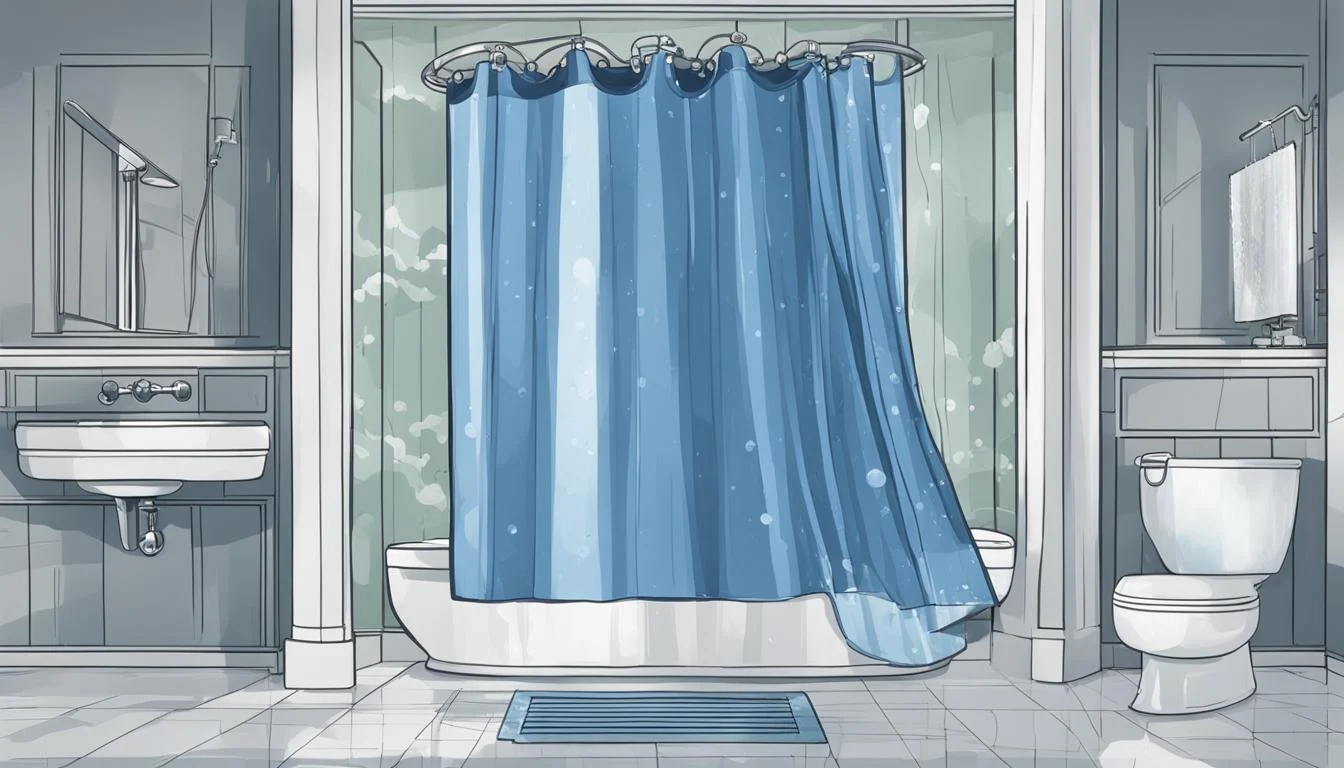
When searching for the perfect shower curtain, several factors should be front and center in your decision-making process. If you have a small bathroom, a liner that maximizes your space while resisting mold or mildew is essential. On the other hand, heavily used shower stalls in a busy household may need a more durable, heavy-duty option. Considering these aspects can make all the difference in maintaining water in the shower and avoiding spills onto your bathroom floor.
Knowing what to look for in a shower curtain liner means examining the practicalities that match your bathroom’s demands. Here, we’ve compiled a quick reference guide to help you navigate the choices available and select the best option tailored to your space and lifestyle:
| Feature | Best for Small Bathrooms | Recommended for High Traffic |
|---|---|---|
| Material | Fabric that resists water and feels less bulky | Vinyl or PEVA for longevity and low maintenance |
| Resistance to Mold and Mildew | Look for antimicrobial properties | Durable materials that can be easily cleaned |
| Maintenance | Machine-washable options for quick cleaning | Heavy-duty liners that require less frequent washing |
| Design and Aesthetics | Choose clear or light-colored liners to enhance the sense of space | Select patterns or textures that conceal water spots and soap scum |
The ideal shower curtain liner not only keeps your bathroom dry and hygienic but also complements your personal decor style. Don’t compromise on quality to ensure you have a serene and functional bathroom retreat.
Installing Shower Curtain Liners
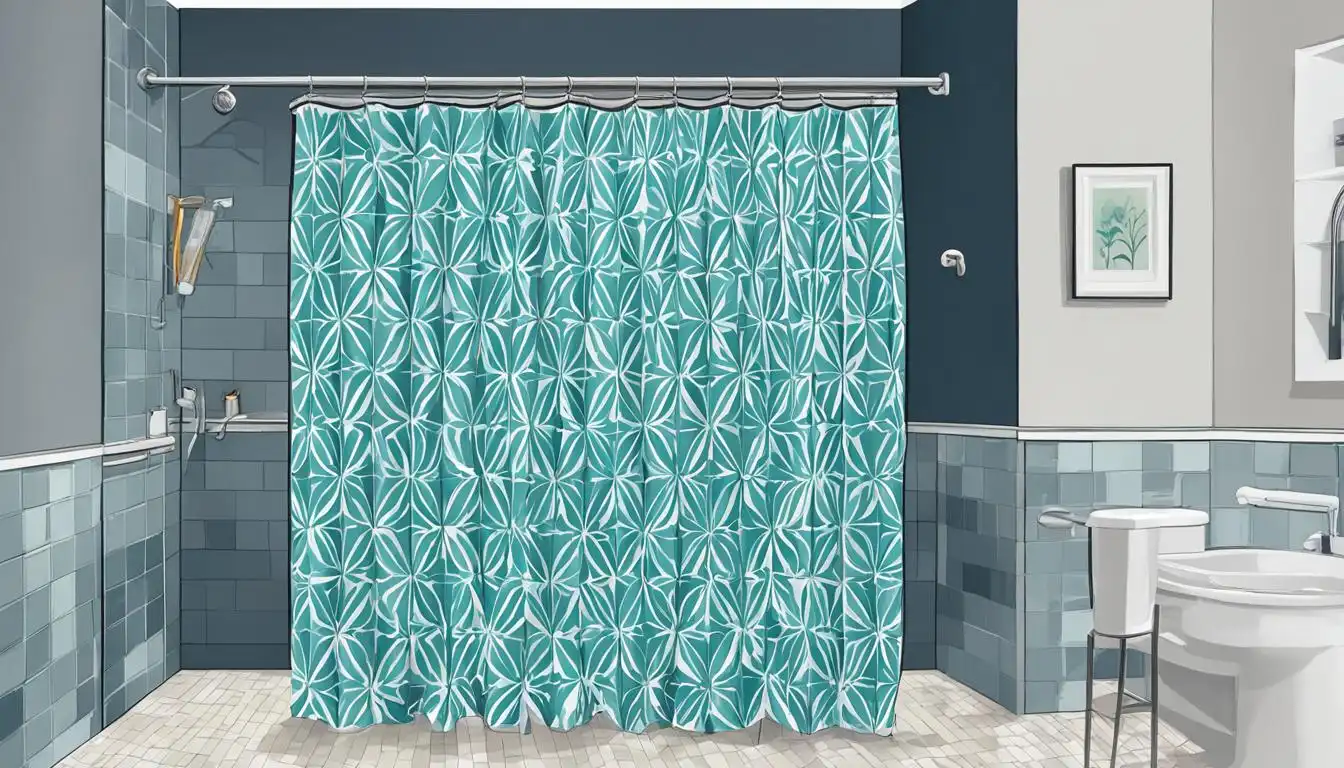
When you go to install the shower curtain, remember to hang the liner inside the tub. This simple but crucial practice ensures that water stays where it’s supposed to be. Moreover, when you’re finished bathing, make an effort to leave the curtain hanging straight so that it can air dry properly. By doing so, you’ll reduce the chances of mildew growth and get the most out of your liner’s protective capabilities.
- Choose a liner that fits your shower’s dimensions.
- Ensure compatibility with the shower curtain and hooks or rings you have.
- Secure the liner on the rod before closing the curtain rings.
- Smooth out any wrinkles or folds for full coverage.
- Test the liner to ensure it stays inside the shower area during use.
If you follow these steps carefully, you can make sure that your bathroom remains a comfortable and moisture-free place. Always remember that the proper installation and maintenance of your liner are crucial to maintaining the beauty and functionality of your bathroom.
Maintaining and Replacing Shower Curtain Liners
Ensuring the longevity of your shower liner starts with proper maintenance. By keeping it clean, you not only protect your bathroom but also contribute to a healthier environment within it. A key aspect of this upkeep is using the antimicrobial properties and machine-washable nature of many modern liners.
Cleaning Methods
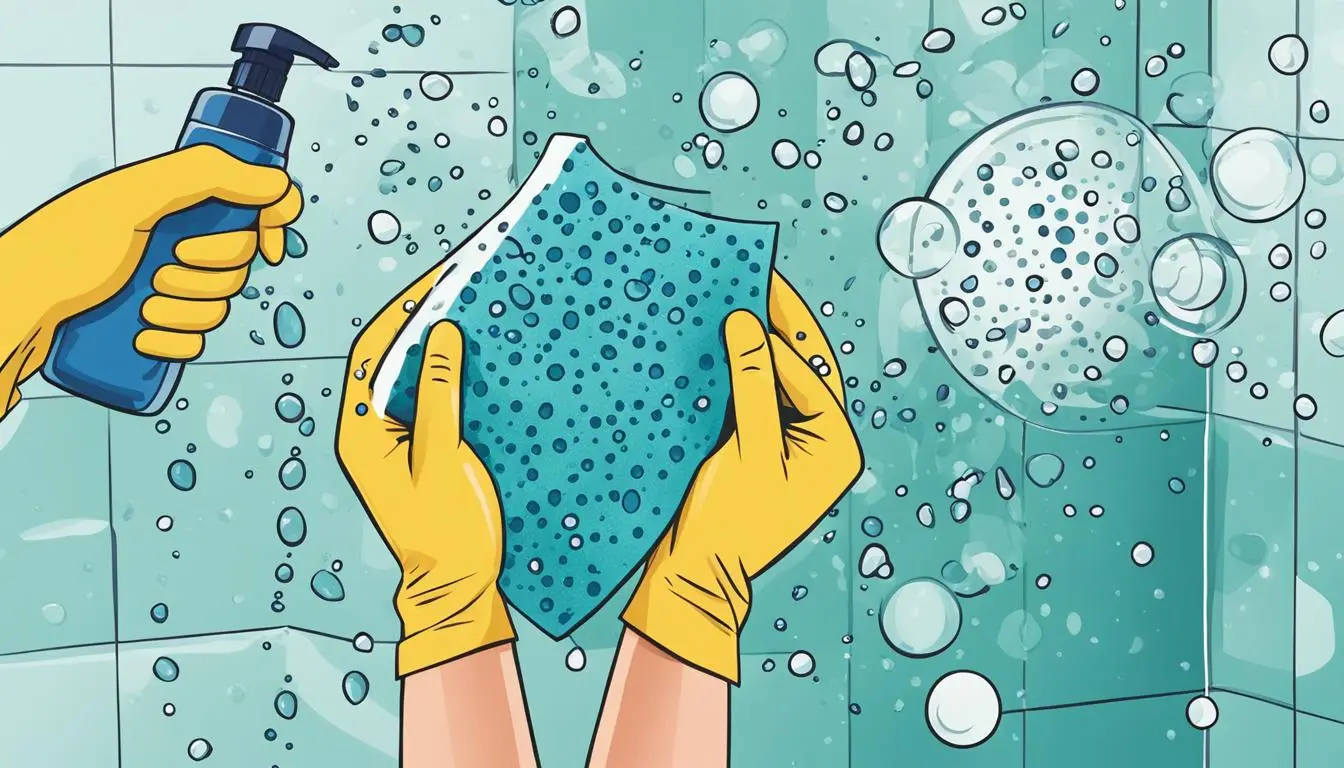
Regular washing is crucial to maintaining your liner’s effectiveness. Many of today’s shower curtain liners can be tossed into the washing machine. This makes the cleaning process simple and thorough. For liners that aren’t machine washable, a good scrub with a mildew-resistant cleaner will help prevent mold and mildew. Ensure to follow the care instructions specific to your liner to avoid any damage.
Replacement Frequency
Even the most heavy-duty liner will wear out over time. It’s recommended to inspect your liners periodically for any signs of wear, such as tearing, discoloration, or contamination. If the antimicrobial properties begin to wane or the material starts to degrade, it’s time to protect your bathroom with a replacement. The table below suggests a replacement timeline based on the liner type:
| Type of Liner | Antimicrobial Features | Suggested Replacement Frequency |
|---|---|---|
| Heavy Duty Vinyl | Basic antimicrobial | Every 6–12 months |
| PEVA/EVA Liners | Enhanced antimicrobial | Every 12–18 months |
| Fabric Liners | Depends on the treatment | Every 12–24 months |
Remember, these time frames are only guidelines. High-humidity environments or showers with heavy use may need more frequent cleaning to prevent mold and mildew buildup and maintain optimal bathroom hygiene.
Conclusion
As we conclude our discussion, it’s clear that a shower curtain liner plays a vital role in maintaining the integrity and appearance of your bathroom.
When choosing a shower liner, it’s important to consider more than just the price and appearance. The functionality, health, and environmental impact of the liner are also important factors to take into account.
Regardless of whether the liner is made of plastic or a soft fabric, it serves the purpose of safeguarding your personal space from water damage.
FAQs
What should I look for when purchasing a shower curtain liner?
When purchasing a shower curtain liner, look for one with mildew resistance to prevent the growth of mold and mildew. Consider whether you need a heavy-duty liner based on your bathroom’s usage. The material is also important. Vinyl liners are inexpensive but can release harmful chemicals. Fabric liners are stylish but may need more frequent cleaning. Size and transparency may also be considerations based on your personal preferences.
Are there any eco-friendly shower curtain liner materials?
Yes, PEVA and EVA shower liners are eco-friendly options. They are free of toxic chemicals, emit low VOCs, and are machine washable for easy cleaning, making them more eco-friendly.
What would be the best shower curtain liner for a small bathroom?
When choosing a shower curtain liner for a small bathroom, it is important to find one that fits properly in relation to your shower stall. It should also be resistant to mildew to prevent mold growth in the often more humid, confined spaces of a smaller bathroom. Look for a design that complements the overall aesthetic of your bathroom. Consider features such as weighted magnets that keep the liner in place, which can be especially useful in a more compact bathroom.
Can I use a shower curtain without a liner?
While it is possible to use a shower curtain without a liner, it is not advised. Shower curtain liners, especially if they are waterproof, provide protection against water splashing outside the shower or tub. Without a liner, your curtain will likely deteriorate faster due to moisture and may lead to water damage to your bathroom floor.
Is there a difference between a shower curtain and a liner?
Yes, there is a difference. A shower curtain is usually an outer decorative piece that can be made of various fabrics, such as polyester or cotton. A liner is to be used inside the tub to prevent water from splashing onto the bathroom floor and to protect the curtain from moisture. While liners are usually made of plastic, PEVA, or fabric, they are often lightweight and quick-drying compared to many decorative curtains.


